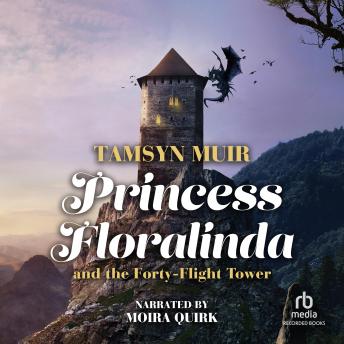The conflict of this story is less about the challenges at each level of the tower and fighting the beasts therein, but more about challenging roles assigned to us and fighting expectations. Floralinda begins her journey relying on the information she has been fed about what it means to be a princess. Cobweb has pushed back against the expectations the fairies have for them and is punished as a result. Both come to terms with their goals in life through the plot, and neither accepts the roles assigned to them at the beginning of the story. While this is a comedic fairy tale retelling, it is also an allegory for the reader to examine their roles and the expectations society has placed on them. While these might not be as extreme as princess or bottom-of-the-garden fairy, they still warrant introspection.
The narrator, Moira Quirk, did a very good job with the story. Her voice fit perfectly with the plot and setting, and she did an excellent job differentiating between the characters.
I really enjoyed Tasmyn Muir’s Princess Floralinda and the Forty-Flight Tower and finished listening to it in less than two days (thanks to an abundance of yard work). I would recommend it to any age, really, but I think teens and young adults will find it entertaining and enlightening.

Comments
Post a Comment